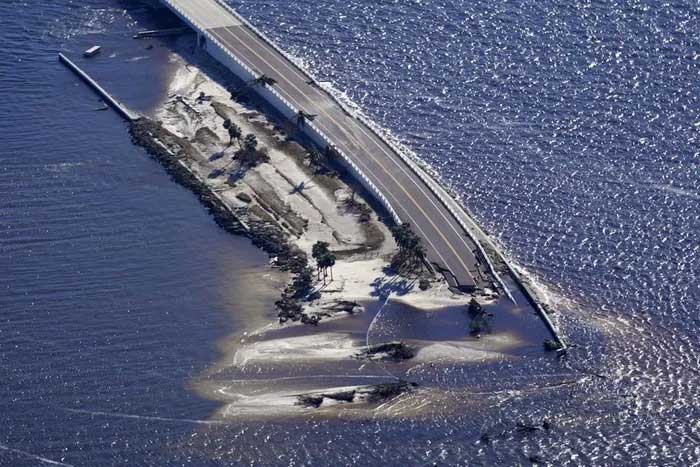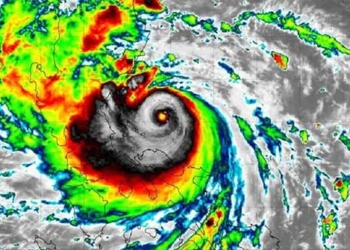Hurricane Ian is one of the five worst storms recorded in U.S. history. Unfortunately, it is not just a random weather phenomenon.

Hurricane Ian is one of the strongest storms in recorded history to hit the U.S.
Climate change once seemed like a distant threat. But not anymore. Humanity is witnessing the “faces” of climate change. We see it in hurricanes, floods, heatwaves, wildfires, and droughts. Hurricane Ian is the latest example.
When it made landfall, Hurricane Ian was one of the five strongest storms recorded in U.S. history. With winds of 240 km/h at landfall, Hurricane Ian, along with Hurricane Charley in 2004, is one of the two strongest storms ever to strike the western coast of Florida.
At first glance, Hurricane Ian may appear to be a random event. But it is not – it is part of a weather pattern that includes hurricanes and superstorms becoming stronger as oceans continue to record record warmth, according to the Guardian.

U.S. President Joe Biden warned on September 29 that Hurricane Ian could be the “deadliest storm in Florida’s history.” (Photo: NOAA).
Human-Made Disasters
Many storms in the past five years – Harvey, Maria, Florence, Michael, Ida, and Ian – are not natural disasters, but rather human-made disasters.
The intensity of these storms is amplified by humanity’s continued burning of fossil fuels and the increasing greenhouse effect, causing the Earth to heat up.
This year’s Atlantic hurricane season started off relatively mild, but has gradually intensified due to unusually warm sea temperatures.
Hurricane Fiona struck Puerto Rico as a Category 4 storm, leaving hundreds of thousands without power even now.
This storm then made landfall in Canada, becoming the strongest storm ever recorded in that country. Next came Ian, a storm formed due to the warming temperatures of deep water layers in the Gulf of Mexico.
Human-caused global warming not only heats the ocean surface. Warmth is diffusing down to deeper layers of the ocean, causing ocean temperatures to reach record highs year after year.
This means that storms are less likely to stir up cooler waters from deep below the ocean, which is a natural mechanism that reduces storm intensity.
The consequence is that many storms we see today can rapidly intensify and explode into major hurricanes within just a few hours.

Homes and streets damaged after Hurricane Ian swept through Punta Gorda, Florida, on September 29. (Photo: Reuters).
Warming Oceans
Government scientists have frequently stated that we cannot link individual storms to climate change.
Climate scientists once believed that this was true. But that is no longer the case.
Many useful tools have been developed to determine the extent of global warming’s influence on extreme weather phenomena.
Warmer oceans create conditions for stronger storms. Wind speeds of major storms increase by an average of about 30 km/h (a 13% increase) for each 1°C rise in ocean surface temperature. This increase in wind speed raises the potential damage from storms by about 44%.
Additionally, according to CNN, there is also evidence that human-caused global warming is increasing the scale of storms.
The amount of moisture evaporating from the ocean into the atmosphere increases by about 7% for each 1°C of ocean surface warming, meaning that an additional 7% of moisture is converted into rainfall. But that’s not the whole story. Stronger storms can also carry more moisture.

A damaged road on Sanibel Island, Florida due to Hurricane Ian. (Photo: AP).
Unavoidable Consequences
If humanity continues to warm the planet, causing ice sheets in Greenland and West Antarctica to melt rapidly, we will have to measure sea level rise in yards rather than just feet.
It is crucial to enhance resilience and adapt to the inevitable changes.
All precautionary measures must be taken to save coastlines from the devastating consequences of rising sea levels along with stronger storms that cause more damage.
However, there will be no adaptation that can protect Florida, or anywhere else in the world, from the catastrophic consequences of our planet’s ongoing warming.




















































